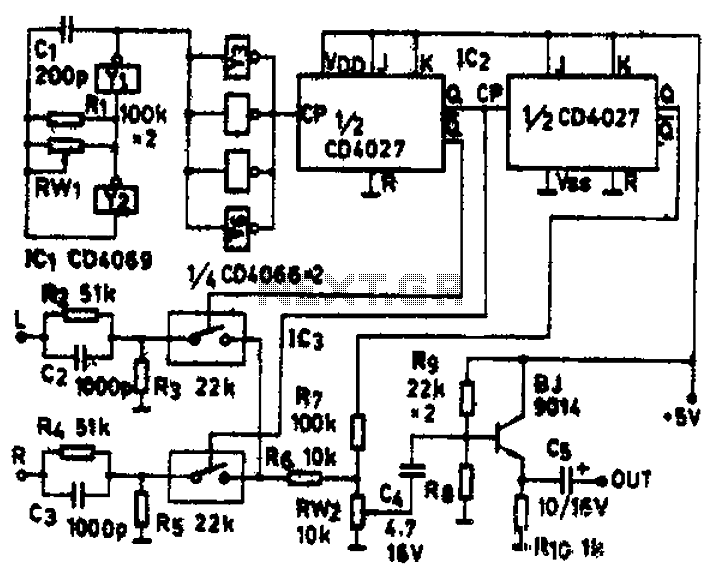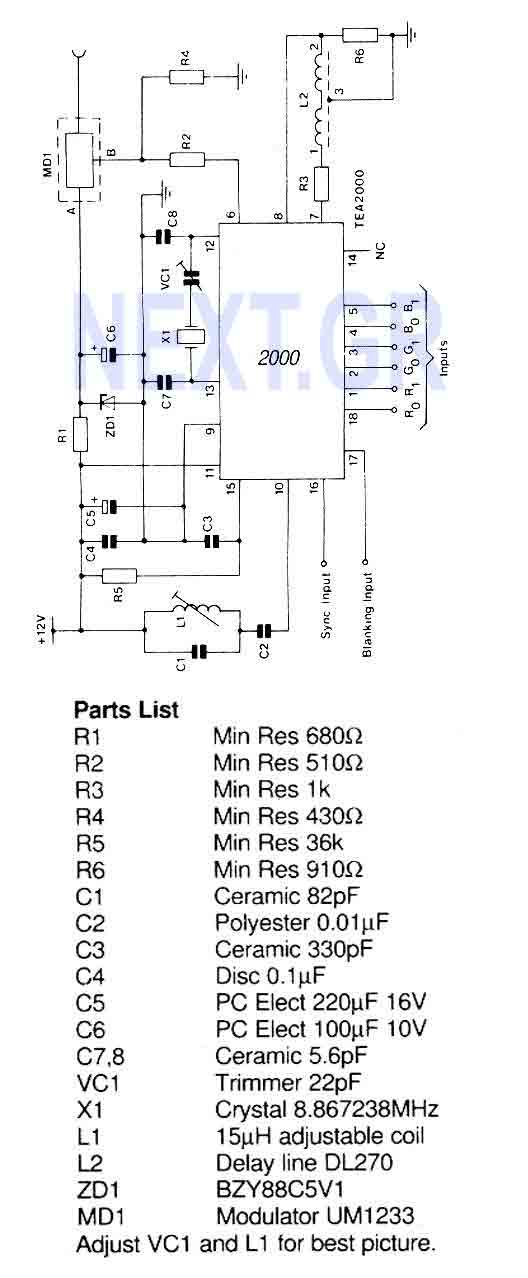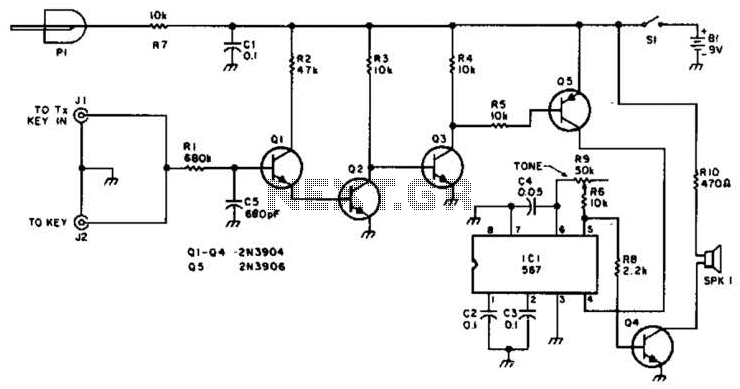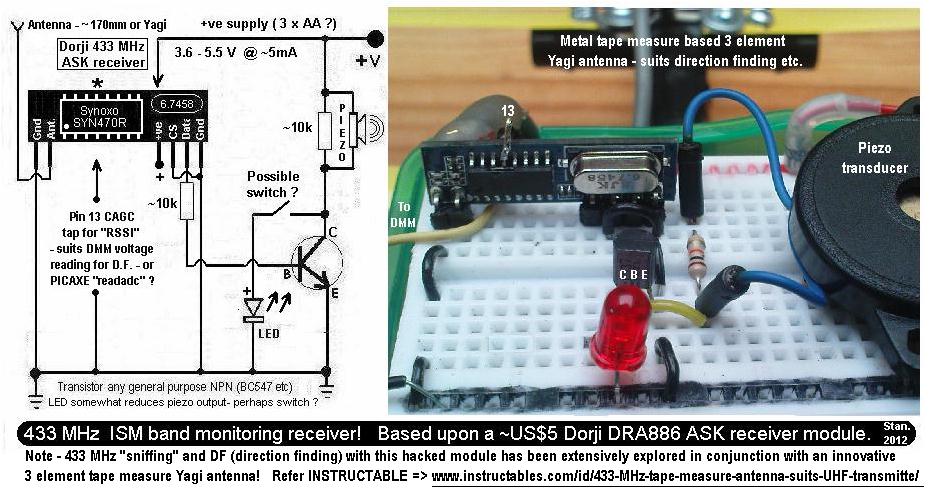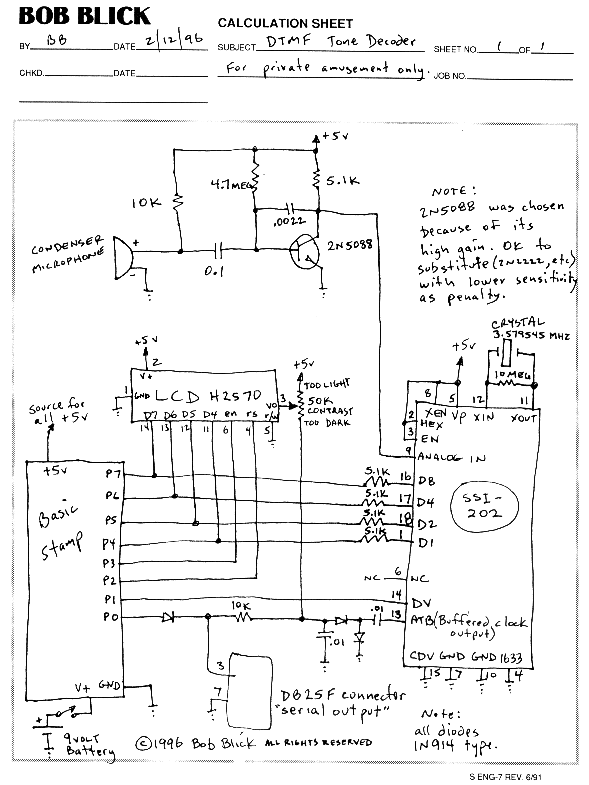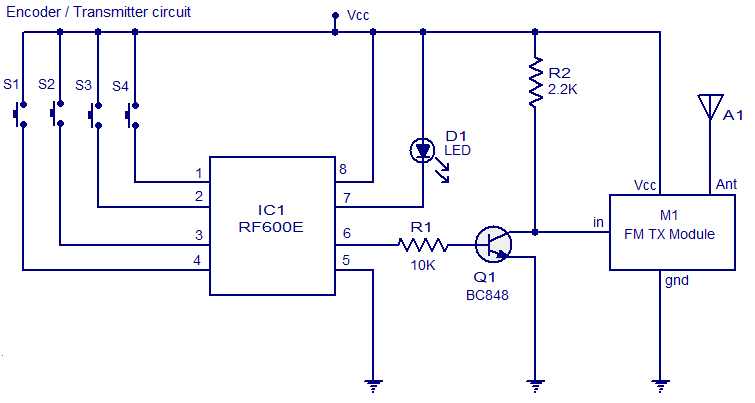
Morse Code Beacon Keyer
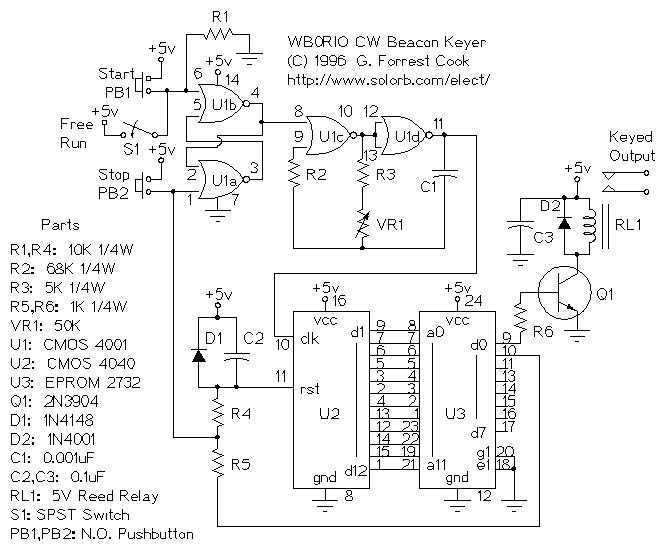
This circuit stores a single morse code message as bits in an EPROM chip, the message is sent to a relay which can key a CW transmitter. The keyer can output either a one-shot message such as "CQ DX DE CALLSIGN", or a continuous message. The continuous mode is useful for making low power (QRP) beacons. A One-shot message is controlled by the start/stop buttons, a continuous message is sent by turning on the free run switch. EPROMs other than the 2732 can be used if suitable changes are made to the circuit. For larger EPROMs, just ground the higher order address input lines on the EPROM chip, and wire the appropriate chip select pins for outputs enabled and chip selected. It is also possible to store more than one message in different banks of a larger EP.
This circuit utilizes an EPROM chip to store Morse code messages, which are then transmitted via a relay to key a Continuous Wave (CW) transmitter. The design allows for two operational modes: one-shot and continuous. The one-shot mode is activated through start/stop buttons, enabling a specific message to be sent, such as "CQ DX DE CALLSIGN." This feature is particularly useful for operators who wish to send a predefined message without manual intervention. The continuous mode is engaged by activating a free run switch, allowing for the transmission of a Morse code message in a loop, beneficial for low-power beacon operations.
The circuit design is flexible, permitting the use of various EPROM models beyond the standard 2732, provided that necessary modifications are made to accommodate the specifications of the chosen chip. For larger EPROMs, modifications involve grounding the higher-order address input lines, which effectively allows the circuit to utilize the additional storage capacity of the chip. The appropriate chip select pins must also be wired to ensure that the outputs are enabled and the chip is properly selected for operation.
Furthermore, the circuit can be expanded to store multiple messages in different banks of a larger EPROM, enhancing its functionality and versatility. This capability allows users to switch between various stored messages, making it an effective tool for amateur radio operators who frequently communicate using Morse code. The design emphasizes reliability and ease of use, ensuring that even less experienced users can operate the system effectively.This circuit stores a single morse code message as bits in an EPROM chip, the message is sent to a relay which can key a CW transmitter. The keyer can output either a one-shot message such as "CQ DX DE CALLSIGN", or a continuous message. The continuous mode is useful for making low power (QRP) beacons. A One-shot message is controlled by the start/stop buttons, a continuous message is sent by turning on the free run switch.
EPROMs other than the 2732 can be used if suitable changes are made to the circuit. For larger EPROMs, just ground the higher order address input lines on the EPROM chip, and wire the appropriate chip select pins for outputs enabled and chip selected. It is also possible to store more than one message in different banks of a larger EP 🔗 External reference
This circuit utilizes an EPROM chip to store Morse code messages, which are then transmitted via a relay to key a Continuous Wave (CW) transmitter. The design allows for two operational modes: one-shot and continuous. The one-shot mode is activated through start/stop buttons, enabling a specific message to be sent, such as "CQ DX DE CALLSIGN." This feature is particularly useful for operators who wish to send a predefined message without manual intervention. The continuous mode is engaged by activating a free run switch, allowing for the transmission of a Morse code message in a loop, beneficial for low-power beacon operations.
The circuit design is flexible, permitting the use of various EPROM models beyond the standard 2732, provided that necessary modifications are made to accommodate the specifications of the chosen chip. For larger EPROMs, modifications involve grounding the higher-order address input lines, which effectively allows the circuit to utilize the additional storage capacity of the chip. The appropriate chip select pins must also be wired to ensure that the outputs are enabled and the chip is properly selected for operation.
Furthermore, the circuit can be expanded to store multiple messages in different banks of a larger EPROM, enhancing its functionality and versatility. This capability allows users to switch between various stored messages, making it an effective tool for amateur radio operators who frequently communicate using Morse code. The design emphasizes reliability and ease of use, ensuring that even less experienced users can operate the system effectively.This circuit stores a single morse code message as bits in an EPROM chip, the message is sent to a relay which can key a CW transmitter. The keyer can output either a one-shot message such as "CQ DX DE CALLSIGN", or a continuous message. The continuous mode is useful for making low power (QRP) beacons. A One-shot message is controlled by the start/stop buttons, a continuous message is sent by turning on the free run switch.
EPROMs other than the 2732 can be used if suitable changes are made to the circuit. For larger EPROMs, just ground the higher order address input lines on the EPROM chip, and wire the appropriate chip select pins for outputs enabled and chip selected. It is also possible to store more than one message in different banks of a larger EP 🔗 External reference
